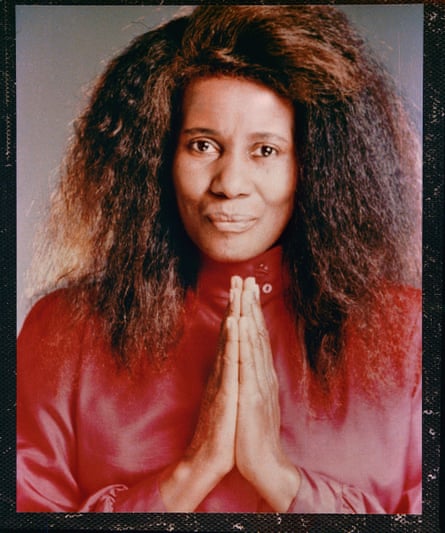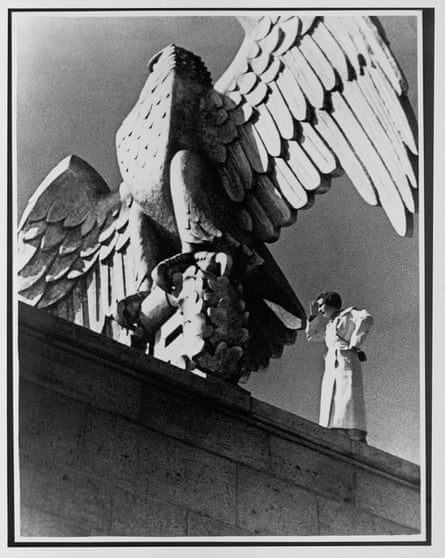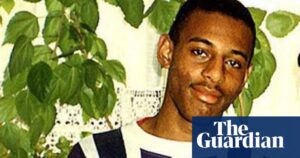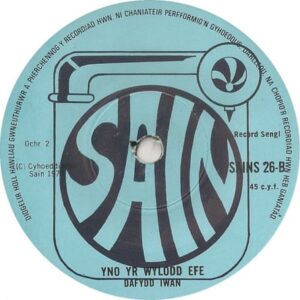20. The Gems – Can’t You Take a Hint? (1964)
Like Motown’s Martha Reeves and Syreeta Wright, Minnie Riperton moonlit as a secretary (at legendary Chicago label Chess) while starting out. Soon she was singing back-up on Chess releases (including Fontella Bass’s wonderful Rescue Me), and the label released 10 singles by her Supremes-like girl-group, the Gems. This was their most charming pitch at the charts.
19. Memory Lane (1979)
Its theme is the bittersweetness of nostalgia, but the poignancy of Memory Lane ran even deeper – two months after its release, Riperton died of the breast cancer that had been diagnosed in January 1976. A masterpiece of jazz-ballad chiaroscuro, this mesmerising torch song conjured regret, but also contained flashes of limitless joy – always Riperton’s trademark.

18. Rotary Connection – We’re Going Wrong (1969)
The creative ambition that drove Rotary Connection – the soulful, psychedelic collective Riperton sang with early in her career – often risked pretentious failure, but when they succeeded, they were sublime. This stunning reimagining of the Cream ballad focuses on the uneasy undertow of the original, aided by Riperton’s five-octave range and piercing whistle-register.
17. Rainy Day in Centreville (1970)
On Riperton’s solo debut, Come to My Garden, Rotary Connection producer Charles Stepney wrapped her unearthly vocal in psychedelic orchestration. This remarkable mini-epic showcased the sensitivity of Stepney’s work, string and brass sections blossoming into grandiose symphonics, then falling back into shadowy tension, to create the album’s magical sonic universe.
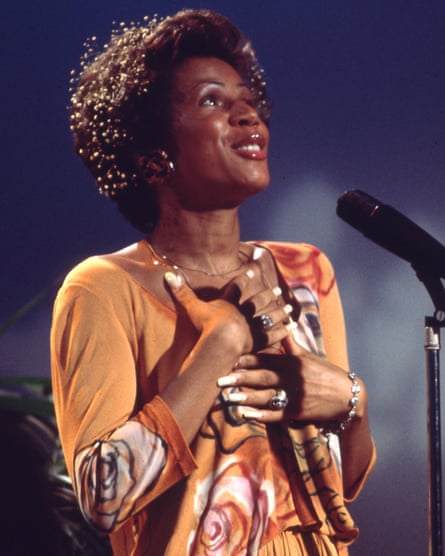
16. Stay in Love (1977)
After the Crusaders-led jazz-funk of her third album, Riperton’s fourth tacked towards disco, for which her ecstatic vocal seemed designed. But little on Stay in Love clicked, not even the Stevie Wonder collaboration Stick Together. This slow-burning closing title track was great, however: an unapologetically treacly testament to the enduring devotion between Riperton and husband, Richard Rudolph.
15. Rotary Connection – Respect (1969)
When Aretha Franklin covered Otis Redding’s domestic strife anthem in 1967, she recast it as a righteous call for liberation and made it her own. Though somewhat less iconic, Rotary Connection’s remodel is no less transformational, becoming a sensual, otherworldly duet between Riperton and Sidney Barnes, scored by spidery acid-rock guitar and sulphurous, uneasy strings.
14. Close Your Eyes and Remember (1970)
Here, Riperton evokes utopian visions of childhood, cherished memories of fairytales, the magic of nature – all regular themes in her work. Like much of the album, it’s a bit “woo” – but Riperton’s divine, untethered vocal seduces the listener into the romance of innocence and memories of “when the moon was made of cheese”.
13. Seeing You This Way (1974)
Heartache was soul’s favourite subject, but – much like Stevie Wonder – Riperton found her truest self when expressing joy. And Riperton possessed joy in abundance. Indeed, here she sounds possessed by it as she sings, scats and screes in wordless devotion to her lover, over shimmering Latin soul and Wonder’s raucous electric piano accompaniment.

12. Alone in Brewster Bay (1975)
This vignette shared an interior, personal moment, as Riperton and Rudolph found themselves briefly separated – physically, not emotionally. “I’m three days without you and I feel like crying,” she sang, attesting to the intensity of the couple’s love, while the arrangement revisited the pared-back, minimal vibe of Lovin’ You, even down to the bird sounds.
11. Every Time He Comes Around (1974)
Riperton tapped the services of crack sessioneer Marlo Henderson to help articulate the near-mystic, uncontrollable carnality in this tale of romantic obsession. Henderson’s neo-psychedelic soloing channels Ernie Isley as Riperton’s coloratura soprano vocal rhapsodises “the love I need to make my spirit whole”; the fusion of erotic and spiritual was very her.
10. Perfect Angel (1974)
Riperton retreated to Florida after Come to My Garden flopped, but interest from superfan Stevie Wonder drew her back to work. Wonder produced her return LP and penned its title track; the playful, romantic vibe proved Minnie and Stevie – whom Rudolph described as “like brother and sister” – to be sublimely kindred spirits.
9. Adventures in Paradise (1975)
Riperton shared Wonder’s boundless optimism and absolute lack of cynicism, investing these guiding principles into the title track for her third album. “I believe any dream I want to,” she sings, a mission statement made vivid by a mercurial vocal soaring from guttural growl to the kind of whistle-register that makes wine glasses tremble.
8. Love and Its Glory (1975)
This infectiously joyful gem offers up a bedtime story from Riperton to her daughter, Maya Rudolph, serving its fable on the importance of love alongside a blizzard of fairy dust. “When you’re true to your heart,” she croons, “you’ll be free.” A simple sentiment, perhaps, but – set to giddily restless rhythms – Riperton makes it soar.
7. Reasons (1974)
Perfect Angel opened with Riperton singing her deepest desires into reality. Over jazzy, acid-dipped rock, she crooned of “the sweet delight, to sing with all my might” – to make good on all the promise of her unique talent after the disappointment of Come to My Garden. And she did, shifting more than 500,000 copies of her true masterpiece.

6. Whenever, Wherever (1970)
Stepney and Riperton conceived Come to My Garden as a psychedelic take on Burt Bacharach’s rapturous collaborations with Dionne Warwick. Its final track – all swooning strings, Riperton’s yearning declarations of love and backing singers delivering unforgivingly complex staccato blitzes – perfected the concept, sending sophisticated cocktail party pop on the wildest trip.
5. Rotary Connection – I Am the Black Gold of the Sun (1971)
Rotary Connection’s quixotic reach for greatness succeeded best on this funkadelic pocket-symphony off their final album, which would chart higher here if her voice weren’t but one magical element (Dave Scott sings lead). But what a majestic ensemble piece – Riperton put every lesson from its creation to work in her subsequent solo output.
4. Our Lives (1974)
While mysticism and eroticism were key themes for Riperton, so was the idyllic domestic life she shared with Rudolph. On this dreamy paean to raising a family, the couple discover nirvana in “the light of children’s laughter”. The track could easily have defaulted to schmaltz, but – thanks in part to Wonder’s impish, whimsical harmonica – it felt moving and profound.

3. Inside My Love (1975)
This slow-burning funk session turned up the temperature with Riperton’s suggestion: “We should be one / Inside each other.” There’s a powerful spiritual element at play here, but her repeated request of “will you come inside me?” made Donna Summer sound like the Singing Nun. Joe Sample’s sublime Fender Rhodes solo at 3:05, meanwhile, remains a sampler’s favourite.
2. Les Fleurs (1970)
A decade before Wonder pondered the secret life of plants, Riperton sang of flowers as spiritual metaphors, of the “beauty and power” that lay like seeds within every soul. Like a wholesome acid trip animated by Walt Disney, Stepney’s production blossomed from pizzicato strings to psychedelic orchestral overload, and made Riperton sound like a towering goddess.
1. Lovin’ You (1974)
The track began as a lullaby Riperton would sing to baby Maya. In translating it to the recording studio, Riperton, Rudolph and producer Wonder quickly discovered its strength lay in its simplicity. They stripped the arrangement back to Rudolph’s acoustic guitar, Wonder’s elemental Fender Rhodes, birdsong captured by Wonder on his Nagra tape recorder in UCLA Botanical Garden and, of course, Riperton’s vocal, joyfully slipping between octaves. Her only chart-topper, Riperton knew they had something as soon as she debuted it in concert: “People started moving closer and putting their arms around each other,” Rudolph remembered. “It was transformational.”
Source: theguardian.com










